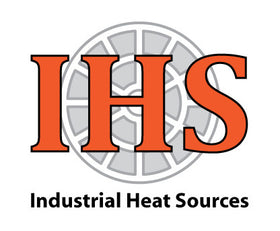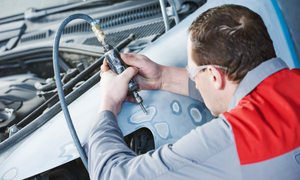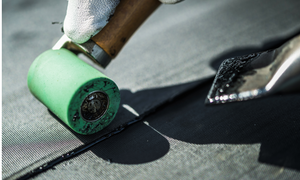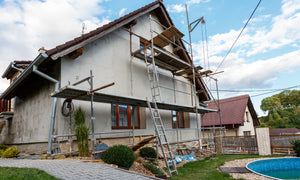9 Plastic Welding Safety Tips

The tools of any trade can pose safety risks if improperly used or maintained. To keep operators of hot-air hand tools and automatic walk welders safe, it is the responsibility of employers, supervisors and peers, to make sure proper precautions are routinely taken.
Following are 9 tips you can use to help keep equipment operators safe:
Plastic Welding Safety Tips
1. Review Safety Instructions—Every operator should read their tool's safety instructions before getting started. If you have any questions or need further clarification on anything, contact your sales and service representatives.2. Review M.S.D. Sheets—Plastics Magazine recommends reading the material safety data (M.S.D.) sheets of the plastic you’re welding. Among other things, these sheets are required to detail the plastic’s hazardous ingredients, fire and explosion hazard information, preventative actions, and first-aid recommendations. Request these sheets from the plastic manufacturer.
3. Train Employees—Train all personnel on how to properly use the welder(s) they will be operating. Specifically, demonstrate how to turn the welder on, run it, shut it down, clean it after use, and what to do in the case of a malfunction or emergency—for example, if a drive motor shuts down while welding or if plastic material catches fire.
4. Store Properly Between Uses—After completing a weld, an operator may set down the hot-air tool or leave the walk welder to prep for the next weld. Because the machine will still be hot and likely blowing hot air, make sure to do the following:
- Hot-Air Hand Tools—Set the tool on a flat surface where it won’t roll, or in a stand with the nozzle pointed away from the surface. Keep the hot air stream and nozzle away from flammable materials and body parts to avoid the risk of fire and burns. There are also certain tools available with automatic shut-off features, to eliminate this risk.
- Automatic Walk Welder—Secure the welding nozzle in the up, locked position, and move it away from heavy traffic areas and flammable materials.
5. Clean Work Areas—Remove any clutter from the work area to ensure a full range of movement. This helps the operator avoid knocking over or spilling anything that may damage the plastic material, catch fire, or require an immediate cleanup. Hastily setting down the tool to clean messes can lead to improper storage between use.
6. Clean Plastic Surfaces—Remove any contaminants that may be on the plastic being welded, including grease, oils, dirt, and moisture. These contaminants may be fire risks or cause the plastic not to weld at all, possibly leading the operator to turn up the heat to unsafe levels to attain a weld.
7. Properly Maintain the Tool—Scrape away melted plastic after each use, and clean air filters of dust and contaminants to ensure the tool receives the proper air supply. Both of these issues can lead to heat backup and overheating. In addition, make sure to replace any frayed or sliced electrical cords to avoid accidental shock.
8. Wear Proper Attire and Equipment—Make sure all operators are wearing the proper protective equipment (PPE) to limit exposure to heated air and surfaces, as well as any airborne plastic or debris. PPE should include long sleeve shirts, pants, gloves and protective eyewear. In addition, depending on the plastic being welded and ventilation, a respirator may be necessary.
9. Abide By The 80% Rule—As a rule of thumb, you’ll never want to max out the energy your tool is capable of. Instead, shoot to hover around that 80% capacity. To help determine your circuit load, reference the following formula:
For example, for a 15-amp circuit, the safe load target is 1,440 watts; for a 20-amp circuit, the safe load is 1,920 watts.
If you do exceed the 80% of power usage rule, and the equipment you’re using continues to operate above the recommended 80% of maximum amperage rating of a circuit, then it is possible that damage can be sustained through heat buildup within a circuit.
Stay up-to-date on all things industrial heating with our newsletter. Click to subscribe!

- Robert Heater






